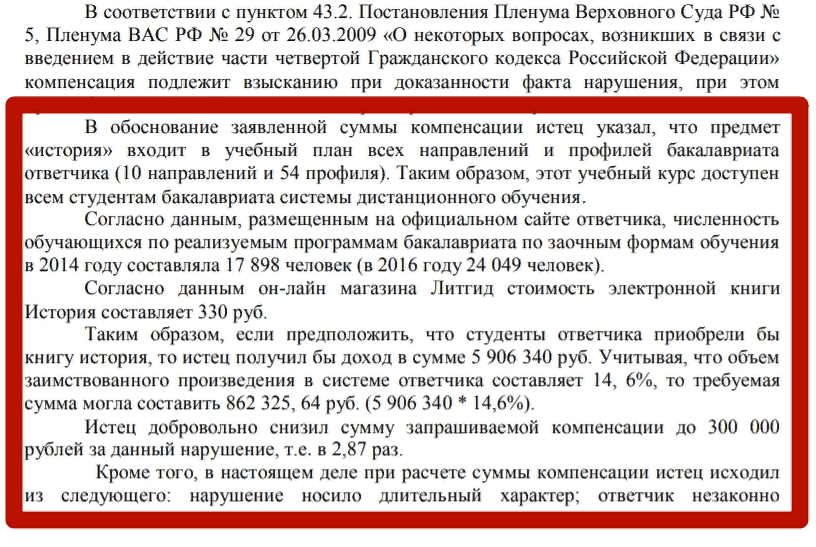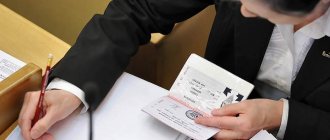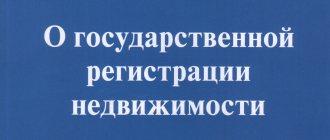Obtaining a patent for intellectual property is a popular service. In modern times, modern technologies are rapidly developing, constantly updated and improved over time. For the full development of their inventions, it becomes necessary to establish their exclusive right to these objects.
Our lawyers will help both in the patent registration procedure and subsequently will take on all the hassle associated with the issue of protecting patent rights from the interference of third parties and suppressing their actions.
General provisions
State registration always presupposes the activities of some competent government agency. In our case, the registering authority is the Federal Service for Intellectual Property (Rospatent), but issues related to selection achievements are in charge of the Ministry of Agriculture of the Russian Federation.
The essence of such activity is that a number of circumstances are checked, in particular: whether the given object can be registered by law, whether the application and documents comply with the requirements of the law, as well as other points.
As a result of registration, the object becomes protected by law. The person indicated in the application as the applicant becomes the copyright holder (i.e., he acquires the exclusive right to such an object of intellectual property). This is the meaning of the whole procedure.
Information about all registered objects is publicly available. On the website of the Federal Institute of Industrial Property (FIPS), which is a division of Rospatent, you can view the relevant registers. Website address: https://www1.fips.ru/wps/portal/Registers/.
Register of selection achievements: https://reestr.gossort.com/.
Copyright registration through collective management communities
To claim the right to an invention, you can contact the collective management community. There are several such companies in Russia. The largest of them are RAO (Russian Copyright Society) and RSP (Russian Union of Copyright Holders).
These communities do not verify whether the applicant is actually the creator of the work, but verify the fact that he applied first. The data is entered into a special register, which can be accessed from anywhere in the world.
Each company has its own cost for copyright registration. The procedure takes on average 20 days. Based on the results, the creator is issued a document confirming the date of registration of the work in the register. The collective management community retains an archived copy of the unique product.
Such registration indicates that the copyright holder has declared himself to be the author of specific works. That is, despite the document being issued, your rights to the product can still be challenged. In court, such a paper will be considered as one of the pieces of evidence, along with others.
Objects that do not require registration
Traditionally, registration is not required for objects of copyright and related rights, since they are protected from the moment of creation. This means that today in Russia there are no, for example, registers of works of science, literature or art, since the legislator sees that this is not necessary. This approach is determined by the norms of international law, for example, the Berne Convention states that no formalities are needed to create copyright.
Why is this done? Experts in the field of intellectual law (in particular, V.A. Dozortsev) attribute this, firstly, to the fact that works are always unique a priori; a complete coincidence of two works is almost impossible. But the coincidence of two inventions is not only a possible situation, but also quite probable. Thus, Alexander Popov presented his version of radio to the public in 1895, but did not file patent rights for it. In 1896, another scientist, Marconi, received a patent for radio, and it is he who is often called in Europe and the USA the true inventor of radio.
Another point worth paying attention to is the following: the form is protected in works and performances, and the content is protected in objects of industrial property. Thus, the form of two inventions may be different (for example, in a radio it is a different width of the device structure itself, different parts), but if the functional designation is the same, then these inventions are recognized as identical, and priority, as we indicated above, will go to the inventor which he patented earlier. In works and performances, content does not play any role, and therefore it is quite logical that there is no urgent need for registration.
A production secret (know-how) also does not require registration.
In addition, among the means of individualization, a commercial designation is not registered - a relatively new object of intellectual rights for the Russian Federation (see the article about means of individualization). Protection requires familiarity within a certain territory, as well as distinctive features (i.e., complete or significant similarity with other means of individualization is not allowed).
We would like to draw the attention of readers to the fact that, although registration is not provided for by law, copyright holders find alternatives to it for reliability. Thus, there are Internet resources (in particular, https://www.copytrust.ru/) where you can actually register your work. The same services exist in the Russian Authors' Society (RAS). Commercial designations can be registered in the Chambers of Commerce and Industry of the constituent entities of the Russian Federation (see, for example, https://nnov.tpprf.ru/ru/services/32014/). Thus, we can say that accounting for intellectual rights can exist regardless of official registration.
What to do if the violator does not respond to the application or refuses to comply with the requirements
If the violator does not respond to the application within one day or refuses to comply with the author’s demands, the issue is resolved in court.
It is difficult to predict the time period for consideration of the case, but in any case it will be at least 2 months. For his part, the author can try to speed up the process if he ensures competent protection of his interests. To do this, it is better to hire a lawyer - issues with collecting evidence, determining the appropriate court and formulating requirements are quite specific. The lawyer will determine which court to go to, will help collect and prepare evidence, and will also help defend the author’s position in court. The costs of paying for the services of a representative in court can be recovered from the defendant - if there is an agreement for the provision of legal services.
In the event of a claim for compensation, it may not always be obvious how to determine and justify its amount. Each case is individual: the theft of an Instagram post is an offensive, but not exactly unprofitable story, but in the case of plagiarism of an online course, we are talking about real financial losses.
One option is to determine the amount of compensation for a work based on how the author determines its value. And this depends on the amount of time spent on creation, on the quality of the material (informativeness and usefulness) and the author’s personal ideas about the value of his work.
There is no need to be embarrassed to name a figure and justify it for the court - you will not lose anything. As a last resort, the judge will reduce the size of the requirements, but you should always try.
Thus, in case No. A40-69432/15-5-560, the defendant, without the consent of the copyright holder, illegally distributed on the Internet the work “History of Russia” from the “History” educational course. Here is how the plaintiff justified his calculations:

Objects subject to registration
Let us briefly consider the status of computer programs. For them, as an exception, registration is provided, but it is optional and does not affect the emergence of an exclusive right. Most likely, this was done because computer programs have some similarities with objects of industrial property rights (in particular, they may have an innovative level, industrial significance, etc.), but at the same time these properties are not enough for their content to be protected, and not a form. Therefore, such a compromise was found.
The remaining objects of industrial property rights (with the exception of commercial designation and know-how) require registration, and we have already examined the reasons for this approach.
Copyright registration through a notary
To register copyright, the creator provides the original source and a copy of the work to the notary office. If it is not one-page, the sheets are numbered and laced in advance. To verify the time of presentation of the work, the notary examines the document itself. He checks that there are no corrections or erasures. If they exist, they must be specified.
Next, the notary makes a certification inscription on the document. In the future, you can use this as evidence of your copyright in any authorities, including the court. Be careful - the notary office does not determine your authorship, it simply records the date of application. The procedure takes one day.
Procedure
Now let’s answer the question: how to register intellectual property. The procedure itself is regulated by by-laws, which can be viewed here: https://www.rupto.ru/docs/regulations.
The first action will be payment of the patent fee (specific amounts are here: https://www.rupto.ru/activities/dues/patduty/tabl_razm_poshlin).
After this, you need to submit an application, which must be properly completed. The necessary documents are attached to it. In general, it is worth noting that you can resort to the help of patent attorneys (see the article about them) - individuals who specialize in these issues. They can draw up all documents on their own behalf without a power of attorney and send an application to Rospatent, and in this case the inventor will not have to focus his attention on these formalities.
Once the application is submitted, the review stage begins. This stage lasts a very long time: sometimes even more than a year. Rospatent specialists examine the object submitted for registration, carry out its examination, and request the necessary documents. It is very important to respond correctly and timely to requests from Rospatent, to provide the required materials on time, otherwise the registration may be interrupted.
The end of the procedure will be the state registration of the object and with it the exclusive right to it in the appropriate register.
The copyright holder receives the appropriate document: a patent (for example, for an invention, utility model, industrial design) or a registration certificate (for a trademark, for an appellation of origin of goods). Your object will also be assigned an individual number by which the object can be viewed at FIPS. Facebook
The procedure for obtaining a patent for intellectual property
In accordance with the legislation of the Russian Federation, the results of intellectual activity are subject to legal protection. The results of intellectual activity can be expressed in various forms, both in the form of a technical product and an external layout, namely in the form of various samples. Patent registration consists of several stages:
- Patent application. The initial stage of obtaining a patent is drawing up an application for patent registration, which must directly reflect the person who is the creator of the invention, indicating contact information. You should also draw up a document describing the technical characteristics, properties of the product or invention, the essence, and also justify the usefulness of the development.
- Submitting documents to obtain a patent. After preparing an application for a patent, it is transferred for consideration to Rospatent.
- Consideration of a patent application for registration of intellectual property rights. The application is immediately reviewed by the authorized body, after which a decision is made in connection with which the patent is registered, or a decision is made to refuse its registration.
- Registration of a patent is subject to a patent fee.
USEFUL: watch also the video on the topic and ask the lawyer your question in the comments of the video
Other ways to protect copyright
You can protect your copyrights in another way. There are several such methods. The first is to send the work by mail to your own address by registered mail with a list of the contents. The envelope can contain both a written version of the product and one transferred to electronic media (flash card, CD).
After receiving the letter, do not open it and ensure its safe storage. The post office stamp with the date of dispatch is considered the date of creation of the intellectual property. The envelope can only be opened in a courtroom if a copyright dispute arises.
Unfortunately, this method has disadvantages: the shipment may be lost or damaged. You may also have to prove that the letter or postmark is not a fake and that the envelope has not been opened.
The second way is to send your creation to yourself via email. In this case, the date and time of sending is preserved, which will also be a kind of registration of intellectual property rights.
You can also publish your work online. At the same time, to protect copyright, place your last name, first name and copyright symbol - © on the original source. This sign shows that the creation is protected by law and its use is possible only with the permission of the owner. If the author is not indicated or only a pseudonym is given, then the publisher is considered the representative and defender of his rights. For example, the owner of the site where the article or photograph was originally posted.
The fourth option is to place the work in the public domain by reading it aloud in front of witnesses. For example, you are a poet and you declared your new work in the square in front of a large crowd of people. This will also constitute a registration of your copyright based on testimony. But you shouldn’t rely too much on this method - people have short memories.
The final option is to register your copyright electronically. There are special sites on the Internet that provide similar services. You send them your work, and for a certain fee they record the date and time of its receipt. Each site sets the cost individually. Some resources issue certificates or certificates of ownership of a work.
However, we do not recommend using such services. The risk of falling for a scammer is very high. In addition, if a dispute about copyright goes to court, it is not a fact that the court will accept their piece of paper as evidence. In addition, the site itself may no longer function by this time.
Let's summarize. Only a patent provides a 100% guarantee to defend your intellectual property rights in court. Other methods cannot boast of this. Without a patent, the person who has evidence establishing an earlier date of creation of intellectual property than the other party will win the court. Therefore, when creating a masterpiece, immediately think about how to protect your copyright.
Sources:
Objects of copyright
Types of copyright
Liability for violation of the right to a work
The cost of the state fee for maintaining a patent in force







